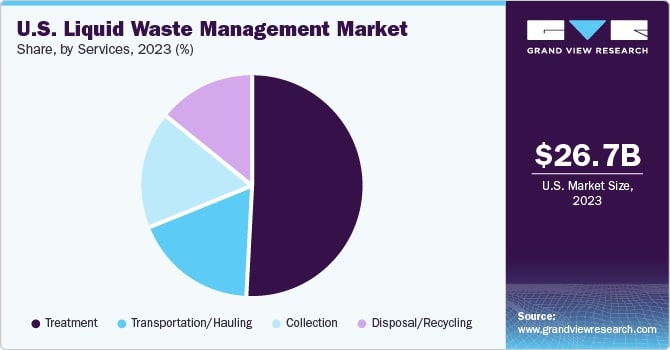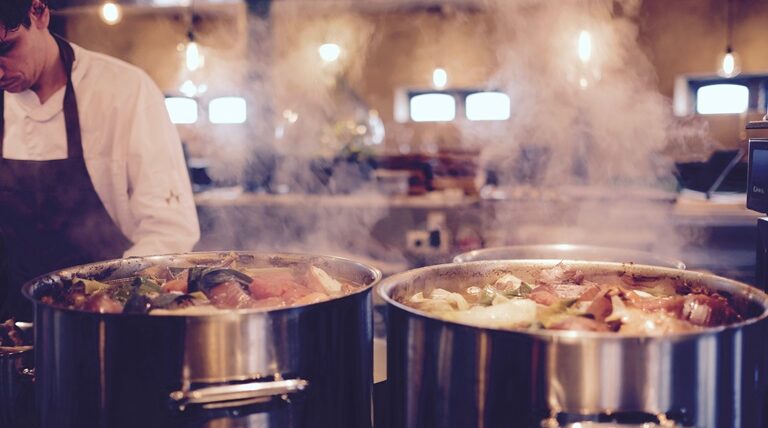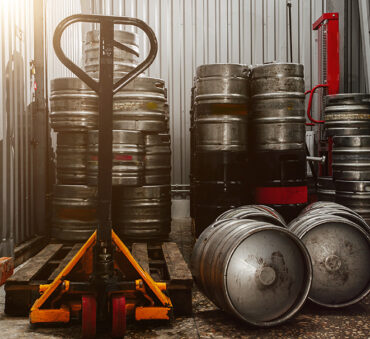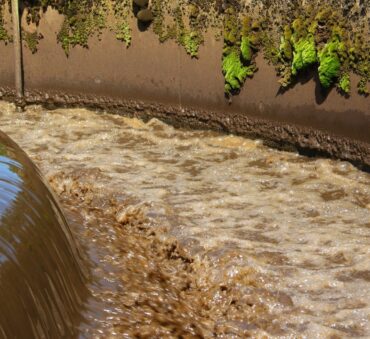The effective management of liquid food waste in the food industry is a topic of increasing importance in both domestic and commercial realms. As the world becomes more conscious of environmental and health impacts, the way we handle this specific type of waste demands a closer look. Often overlooked, it is a significant contributor to environmental degradation and poses unique challenges in waste management systems. In this discussion, we’ll explore best practices for its management and the integral role of specialized services for its efficient disposal and treatment.
Key Takeaways
- Liquid food waste, especially from commercial sources like restaurants, poses significant challenges to waste management systems and has considerable environmental implications.
- Effective management of liquid food waste requires practices like proper storage, employee training, routine maintenance of equipment, sustainable cooking practices, and collaboration with specialized waste management services.
- Liquid food waste requires specialized disposal methods, with options like anaerobic digestion offering opportunities for recycling into biogas and promoting a circular economy.
- Improper management of liquid food waste can lead to environmental issues such as water pollution and wildlife harm, along with urban health risks.
- The overarching goals include reducing environmental impact, promoting sustainable industry practices, and ensuring compliance with health and safety standards.
What is liquid food waste?
Liquid food waste encompasses a range of materials generated during food preparation in restaurants and processing. This includes the water used for washing ingredients, the liquids produced during cooking, and the by-products of food processing. In commercial environments like restaurants and catering services, the volume of such waste is significant. Managing this efficiently is vital to minimize its impact on the environment, as improper handling can lead to pollution and health hazards.
Best Practices for Managing Liquid Food Waste
Effectively managing this type of waste requires strategic planning and practical action. Below, we explore several key practices that can make a substantial difference, particularly in high-volume environments like commercial kitchens.
Proper Storage and Containment
The cornerstone of management is appropriate storage and containment. Especially in industrial kitchens, robust, sealed containers are necessary to prevent leaks, spills, and unpleasant odors. Containers should be resistant to corrosion and easy to clean, thereby maintaining hygienic conditions and facilitating hassle-free waste disposal.
Employee Training and Awareness
Educating kitchen staff and workers in food processing plants is crucial. Training should focus on the importance of minimizing waste, the correct use of containers, and understanding how to operate grease traps and oil separators. Knowledgeable employees are a key asset in reducing waste, enhancing operational efficiency, and ensuring compliance with health and environmental regulations.
Routine Maintenance of Equipment
Maintaining equipment such as grease traps and oil separators is vital. These systems must be cleaned and inspected regularly to ensure they function efficiently. Neglecting maintenance can lead to equipment failure, resulting in costly repairs and potential environmental hazards due to improper waste disposal.
Sustainable Cooking Practices
Innovative and mindful cooking techniques can significantly reduce the amount of liquid waste generated. This includes efficient ingredient usage, proper food storage, and reusing water wherever possible. For instance, water used for washing vegetables can be reused for watering plants, contributing to a sustainable kitchen environment.
Collaboration with Waste Management Services
Forming partnerships with specialized waste management companies is essential for the proper disposal of liquid food waste. These companies can provide expert advice on waste segregation, disposal methods, and compliance with environmental regulations. They can also assist in implementing recycling programs, turning waste into valuable resources like biofuel and compost.
Collection and Separation
When it comes to handling liquid food waste, the emphasis should be on strategic collection and meticulous separation. This stage is crucial in preventing environmental harm and ensuring efficient recycling or disposal.
Implementing advanced technologies such as modern grease traps and innovative oil separators is a game-changer. These are not just functional equipment but vital components in safeguarding our sewage systems and natural water bodies from contamination. Their design is tailored to trap fats, oils, and grease effectively, mitigating the risk of blockages that could lead to extensive damage and costly repairs.
However, technology alone isn’t enough. A rigorous maintenance schedule is essential to keep these systems functioning at their peak. Regular inspections and cleaning are not just best practices; they are necessary actions that ensure compliance with environmental regulations and local waste management laws.
Specialized Disposal Needs
Disposal requires a distinct approach that is fundamentally different from solid waste management. This necessity arises due to its potential to disrupt environmental balance and municipal infrastructure. Standard waste treatment facilities are often ill-equipped to handle the unique properties of liquid food waste, necessitating the involvement of licensed waste management companies. These organizations possess the expertise and technology to manage these food wastes effectively, ensuring they do not contribute to issues like sewage system blockages or environmental contamination. The significance of proper disposal becomes clear when considering the broader implications of mismanagement, including soil and water pollution, which can lead to a cascade of ecological disruptions.

Treatment and Recycling
Treatment involves a series of processes, each designed to safely and efficiently convert waste into either harmless by-products or useful resources.
- Screening and Separation: The initial step involves screening the liquid waste to remove large particles and non-organic contaminants. This is crucial to ensuring that only organic matter progresses to the next stages. Techniques like gravity settlers or mechanical separators are employed, tailored to the waste’s composition.
- Anaerobic Digestion: This process is central to the treatment of liquid food waste. It involves the breakdown of organic matter by microorganisms in an oxygen-free environment. This occurs in sealed tanks and results in the production of biogas, comprising methane and carbon dioxide, and digestate, a nutrient-rich by-product. Biogas serves as a renewable energy source, while digestate can be utilized as a fertilizer.
- Aerobic Treatment: Alternatively, some facilities opt for aerobic treatment, where bacteria decompose organic matter in the presence of oxygen. This method is particularly effective for less concentrated waste and produces a stable, odor-free product.
- Dewatering and Thickening: Post-digestion, the liquid waste is often diluted and requires concentration. Dewatering and thickening are employed to reduce the waste volume and facilitate ease of handling. The resultant material is either directly applicable in agriculture or further processed into compost.
- Composting: In certain instances, solid by-products from liquid waste treatment undergo composting. This process involves further decomposition of organic matter, yielding a nutrient-rich compost suitable for soil enrichment.
- Advanced Treatments: Depending on the end-user requirements, additional treatments such as reverse osmosis, UV radiation, or advanced oxidation may be necessary. These processes ensure that the treated waste adheres to safety and quality standards, particularly for applications in agriculture or landscaping.
Environmental and Health Implications
- Water Pollution: One of the most immediate effects is water pollution. When this waste finds its way into our water systems, it can drastically alter water quality. It’s not just about murky waters; it’s about the entire aquatic ecosystem being thrown off balance. Excessive nutrients lead to overgrowth of algae, a condition known as eutrophication, which severely depletes oxygen levels in water, endangering aquatic life.
- Impact on Wildlife: The repercussions extend to wildlife. Animals’ dependence on these water sources faces direct threats. Consuming contaminated water or plants from these areas can lead to illness, disrupted reproductive cycles, and, in extreme cases, death. It’s a ripple effect – harm one part, and the whole system feels the impact.
- Soil Contamination: The issue seeps deeper, quite literally, affecting the soil. It can change the soil’s composition, making it less conducive to plant growth. This isn’t just about plants; it’s a food chain concern. From tiny soil organisms to larger animals that feed on these plants, the impact is widespread.
- Air Quality Deterioration: As this waste decomposes, it releases greenhouse gases like methane and carbon dioxide. This isn’t just bad for the immediate environment; it contributes to the broader issue of air pollution and climate change.
- Disease Proliferation: Finally, the health risks. Bacteria and pathogens thrive in untreated waste. If this waste contaminates our natural resources, it becomes a carrier of diseases, affecting not just wildlife but also pets and people.
The Goals of Liquid Food Waste Management
- Minimizing Environmental Impact: A primary goal is to reduce the adverse effects on the environment. This includes preventing waterway pollution, reducing greenhouse gas emissions, and avoiding soil contamination. Effective management ensures that the natural world remains unharmed.
- Promoting Resource Recovery and Recycling: One of the key objectives is to transform waste into valuable resources. Through processes like anaerobic digestion, waste is converted into biogas and fertilizers, embodying the principles of a circular economy.
- Ensuring Public Health and Safety: Proper liquid waste management is essential for safeguarding public health. This involves preventing the spread of disease and maintaining hygiene standards, especially in densely populated urban areas.
- Compliance with Regulations: Adhering to environmental regulations and waste management laws is crucial. This goal ensures that practices not only meet current legal requirements but also anticipate future environmental standards.
- Encouraging Sustainable Practices in the Food Industry: Effective waste management fosters a culture of sustainability within the food industry. It involves educating and collaborating with food producers and processors to minimize waste and promote eco-friendly practices.
At Shapiro, we recognize the significance of each of these goals in the realm of liquid waste management. Our services are meticulously designed to align with these objectives, offering comprehensive liquid waste disposal solutions for businesses seeking responsible waste management. Partnering with us ensures that your food and liquid waste is handled efficiently, sustainably, and in compliance with all relevant regulations. Our state-of-the-art processes not only mitigate environmental impact but also contribute to resource recovery, turning waste into an asset.
Liquid Food Waste FAQ
Liquid food waste should be disposed of through methods that prevent environmental damage and comply with local regulations. This typically involves collecting the waste in sealed containers and arranging for collection by licensed waste management companies. These companies have the necessary expertise and equipment to treat and recycle liquid waste properly.
Liquid food waste should be stored in designated, leak-proof containers, away from areas of food preparation or public access, to prevent spills and contamination. The storage location should be accessible for collection by waste management services and comply with any local guidelines for waste storage.
Generally, liquid food waste should not be put down the drain. Doing so can lead to blockages in the plumbing system, environmental pollution, and can disrupt the local wastewater treatment processes. Exceptions might include very small quantities of liquids without solid content, but it’s always best to check local regulations and guidelines.
Baily Ramsey, an accomplished marketing specialist, brings a unique blend of anthropological insight and marketing finesse to the digital landscape. Specializing in educational content creation, she creates content for various industries, with a particular interest in environmental initiatives.



